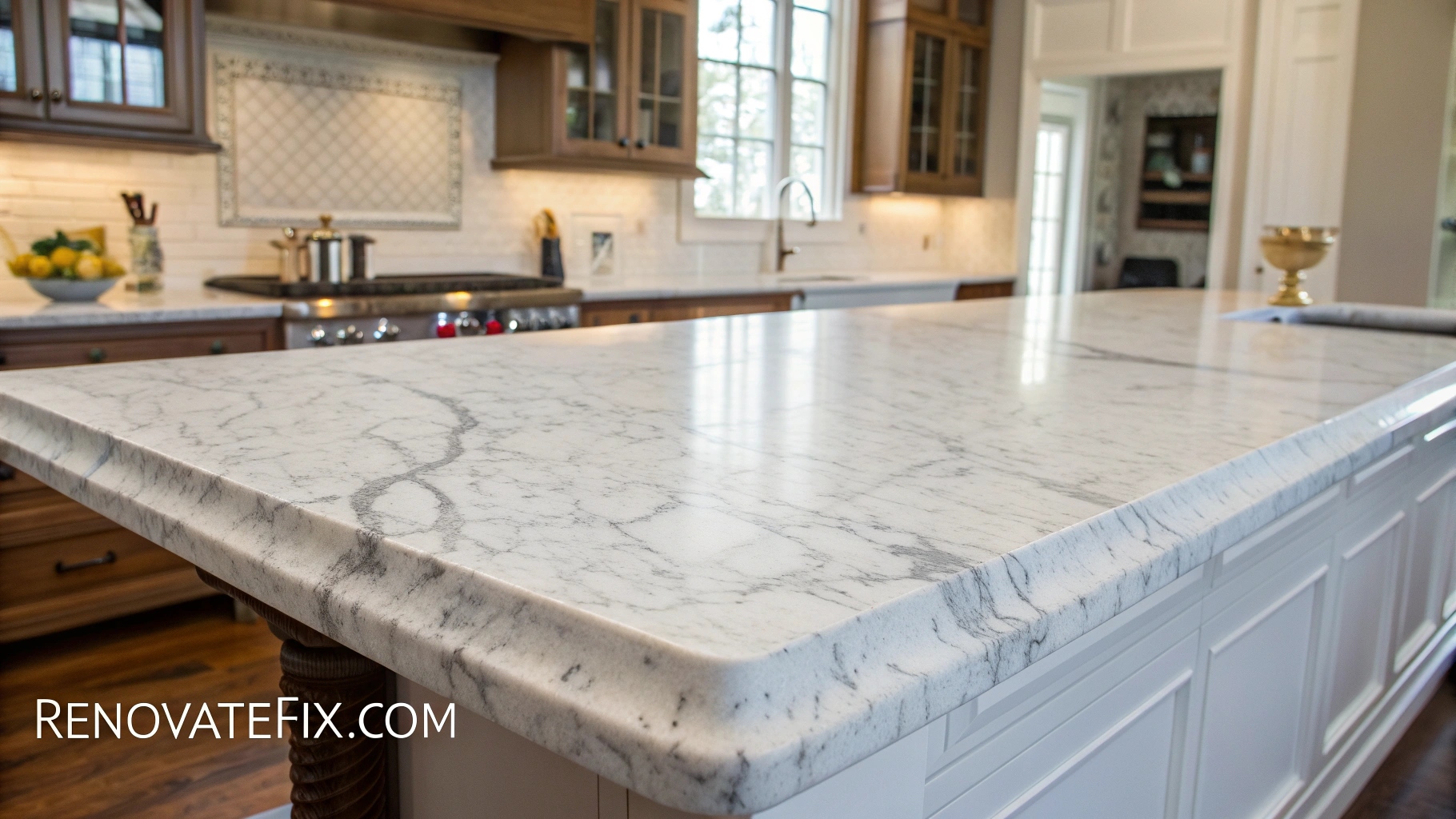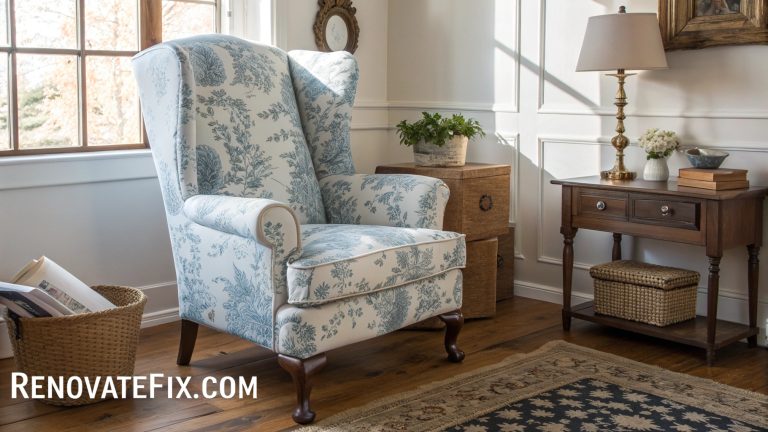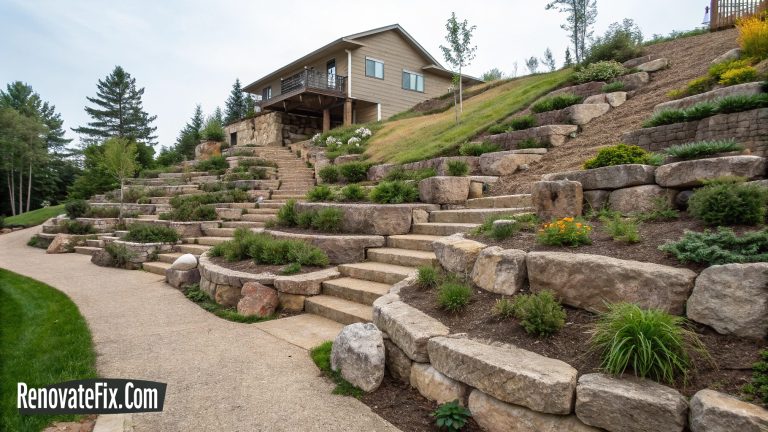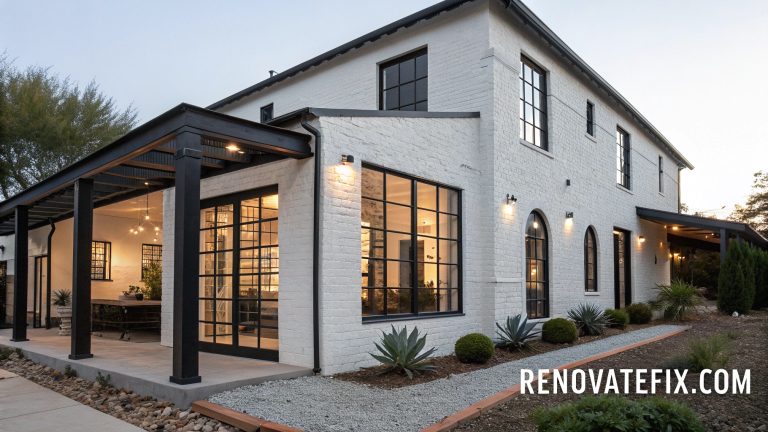Timeless Kitchen Classics Designs That Never Go Out of Style
The heart of every home deserves an aesthetic that withstands passing trends and fleeting fashions.
A classic timeless kitchen combines functionality with enduring appeal, creating spaces that remain beautiful and practical through decades of family gatherings, holiday meals, and everyday cooking.
From natural materials to thoughtful layouts, these fifteen timeless kitchen ideas represent the pinnacle of enduring style—design choices that have proven their worth across generations and continue to charm homeowners today.
Whether you’re planning a complete renovation or seeking subtle updates to refresh your cooking space, these classic elements offer inspiration for creating a kitchen that will remain relevant and beloved for years to come.
15 Classic Timeless Kitchen Ideas
1. Marble Countertops
Rich veining patterns across pristine surfaces bring unmatched elegance to any cooking area, while offering remarkable durability when properly sealed.
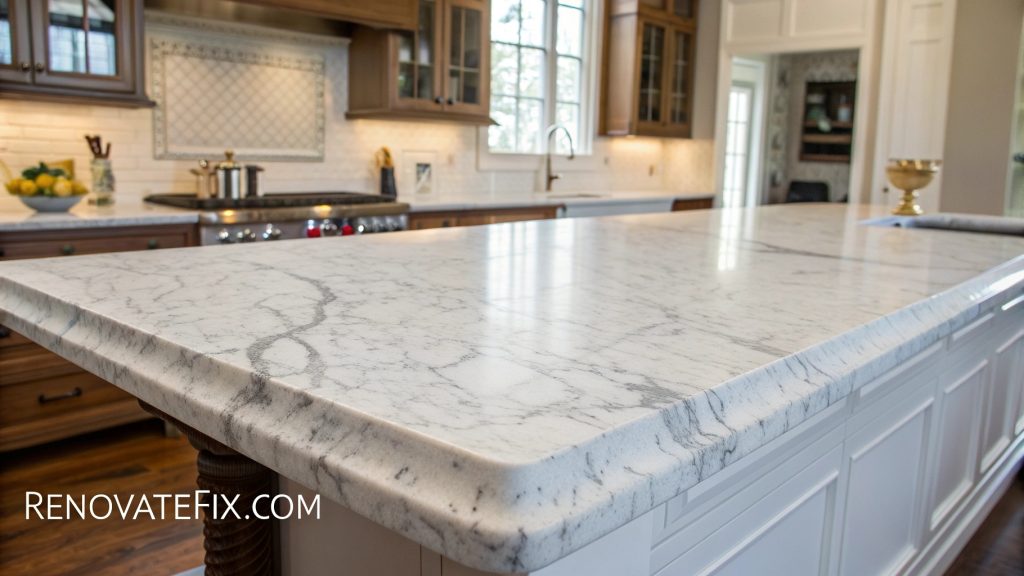
Cool to touch and perfect for pastry preparation, marble develops a patina over years that tells the story of family meals and celebrations shared within these walls.
Despite demanding some maintenance, nothing quite matches its luminous presence or how it reflects light throughout the room, brightening even modest spaces with subtle luxury.
2. White Cabinetry
Crisp painted cabinets bring airiness and brightness to cooking spaces while providing versatile backdrops for changing accessory colors throughout seasons or decades.
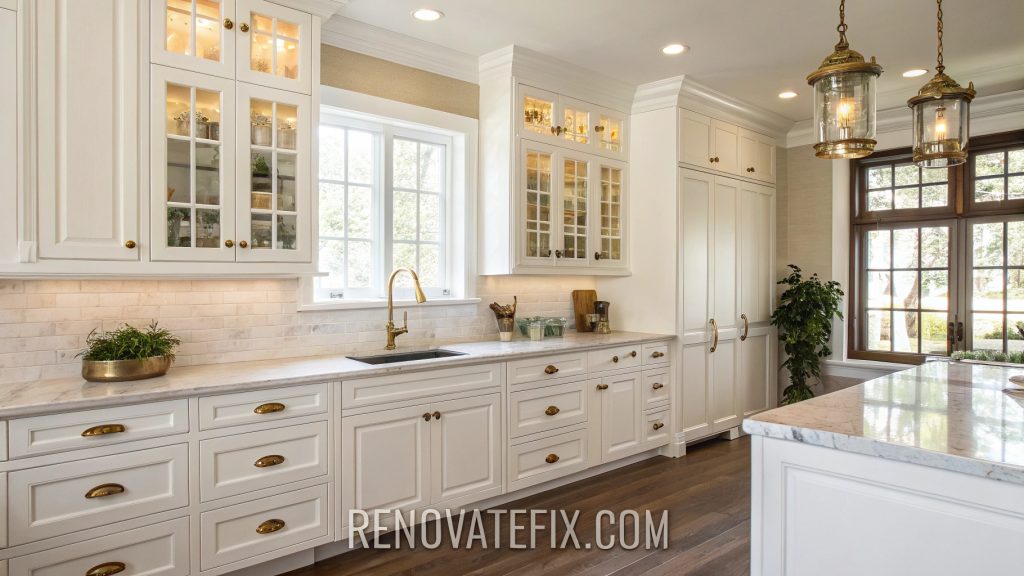
Hand-crafted details like inset doors, beadboard accents, or crown molding elevate simple white storage beyond basic builder-grade options into heirloom quality furnishings.
Resistant to passing color trends, these pale beauties hide cooking splatters less than darker finishes and make modest rooms appear significantly larger through their light-reflecting properties.
3. Hardwood Flooring
Warm underfoot with unmatched character development as years pass, solid wood planks bring natural beauty that complements every style from country cottages to urban brownstones.
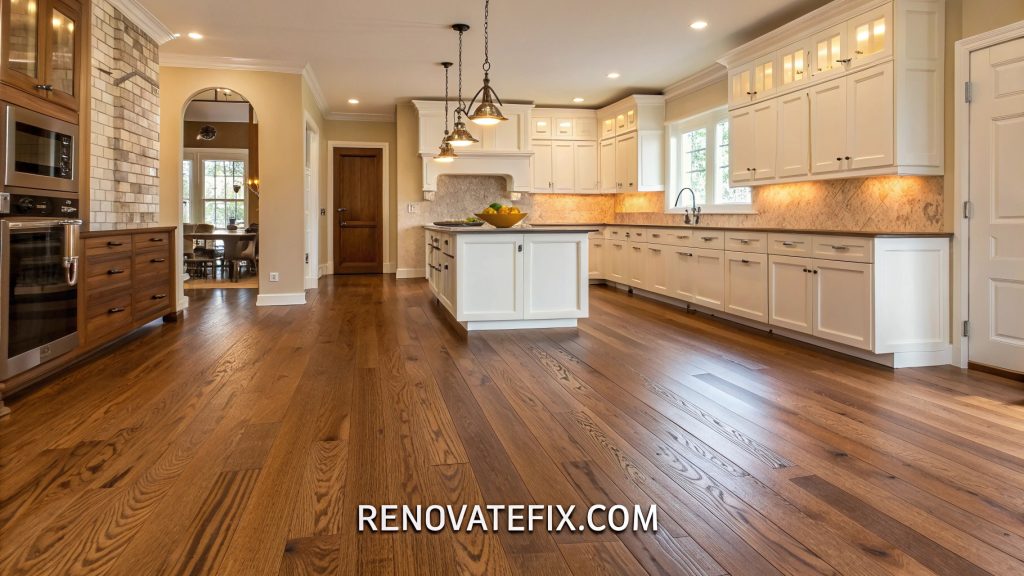
Distinctive grain patterns create visual interest while providing forgiving surfaces that hide minor crumbs or dust between cleaning sessions.
Unlike synthetic alternatives, genuine hardwood can be refinished multiple times across decades, developing richer color through exposure to sunlight and gaining distinctive personality reflecting your family’s unique story.
4. Subway Tile Backsplash
Gleaming rectangular ceramics arranged in offset patterns create subtle texture without overwhelming surrounding elements, bringing hygienic surfaces that wipe clean effortlessly after cooking sessions.
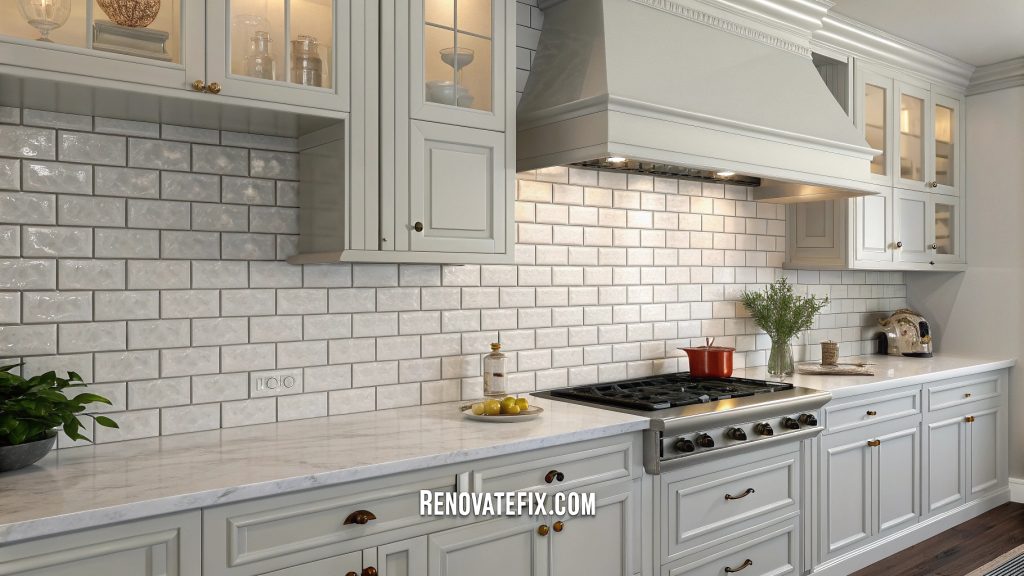
Originally developed for urban transit stations needing durable yet attractive wall coverings, these versatile tiles transition beautifully between architectural styles from Victorian to midcentury.
Grout color choices dramatically alter visual impact—dark lines emphasize geometry while matching grout creates seamless expanses reflecting light beautifully across cooking areas.
5. Farmhouse Sink
Deep basins with exposed fronts bring practical washing capacity for large pots while creating architectural focal points within cabinetry runs.
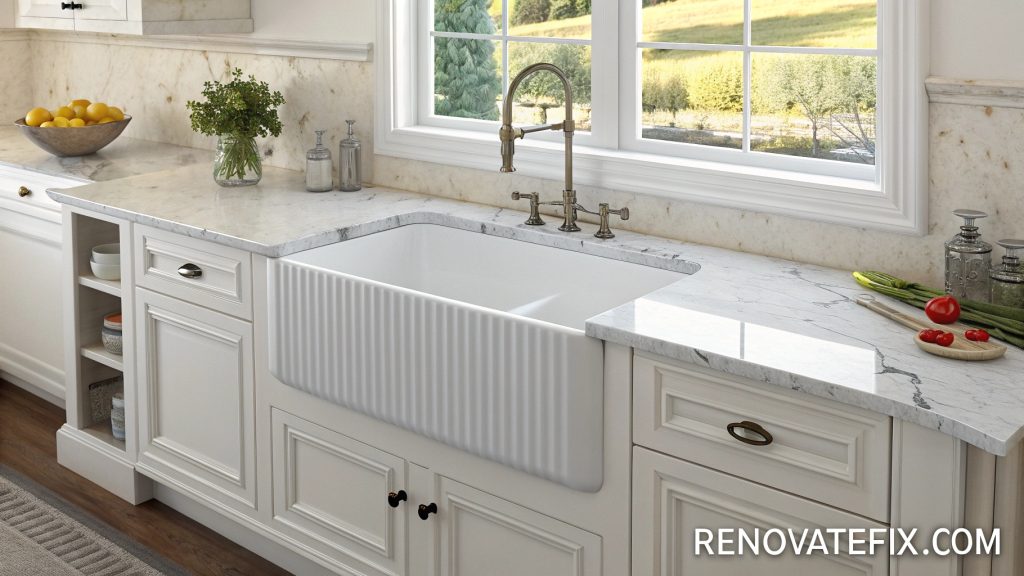
Originally developed before modern plumbing when water required manual carrying, these generous washing stations offer ergonomic benefits through forward positioning that reduces back strain during lengthy cleanup sessions.
Available in fireclay, enameled cast iron, or natural stone, these substantial fixtures anchor cooking spaces with their substantial presence and historical references to rural kitchens past.
6. Brass Hardware
Warm-toned metal pulls and knobs develop unique patinas through handling, creating living finishes that grow more beautiful with passing years rather than wearing out.
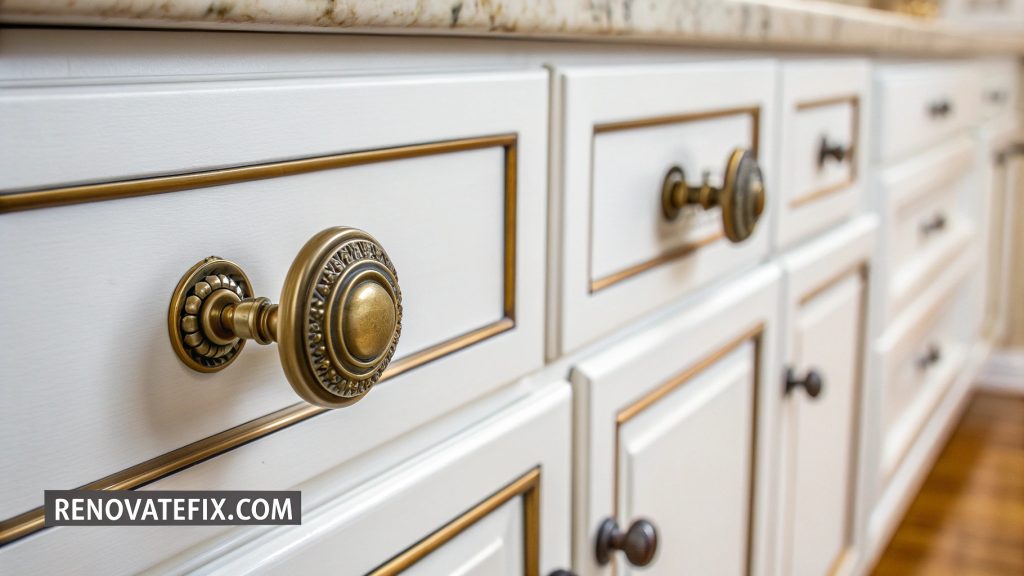
Substantial weight in hand signals quality craftsmanship while offering pleasingly cool touch against fingers when opening drawers or cabinets during cooking tasks.
Unlike chrome or nickel alternatives that maintain unchanging appearance, brass develops character through oxidation processes that create subtle variations across surfaces, particularly around frequently touched areas showing evidence of daily use.
7. Glass Cabinet Doors
Strategic transparency creates visual breaks within solid cabinetry expanses while offering perfect display opportunities for cherished dishware collections handed through generations.
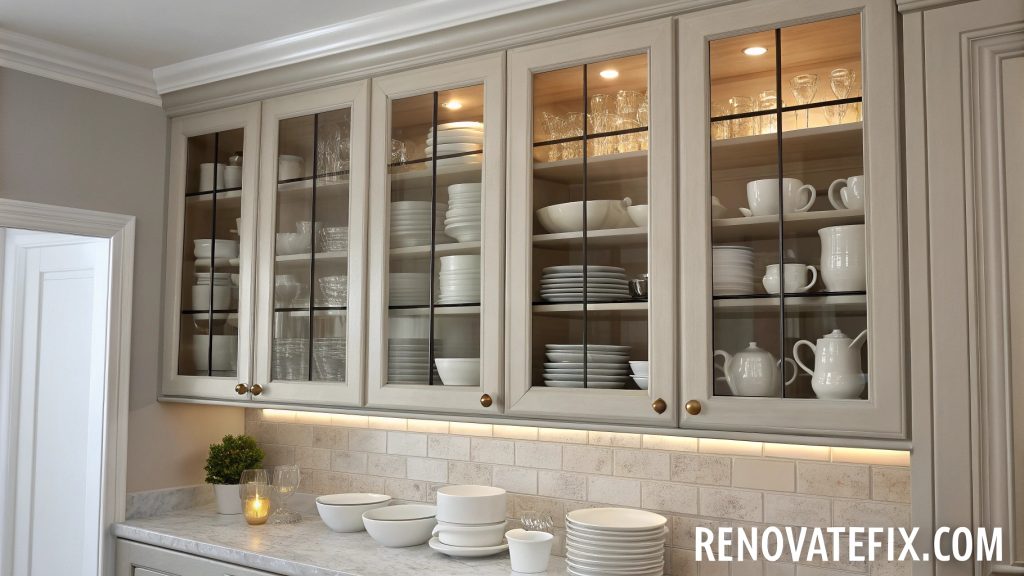
Interior lighting behind glass panels creates evening ambiance when overhead fixtures dim, casting warm glows across dining or preparation areas.
Careful arrangement of colorful ceramics or crystal stemware behind these transparent panels brings personality to cooking spaces without requiring constant rearrangement of open shelving displays vulnerable to cooking splatters.
8. Butcher Block Island
Warm wood work surfaces bring natural elements into cooking spaces while offering practical cutting surfaces that can be sanded fresh when knife marks eventually accumulate through years of meal preparation.

Contrasting beautifully against stone countertops along perimeters, these substantial wooden centerpieces invite family gathering during meal preparation with their inviting natural tones.
Often crafted from maple, walnut or oak, quality blocks develop richer coloration through exposure to cooking oils and household activities—literally absorbing family history through daily use.
9. Crown Molding
Architectural detailing where walls meet ceilings brings finished elegance while visually heightening spaces through upward focus that draws eyes toward decorative transitions.

Painted matching adjacent cabinetry creates cohesive framing around cooking areas, wrapping rooms with historical references to formal spaces typically reserved for living areas.
Multi-piece installations with stacked profiles bring substantial presence appropriate for grand spaces while simpler single-piece options provide similar benefits for modest rooms without overwhelming proportional balance.
10. Pendant Lighting
Suspended fixtures create focused illumination over work areas while establishing vertical rhythm through hanging elements that draw eyes upward, emphasizing ceiling height.
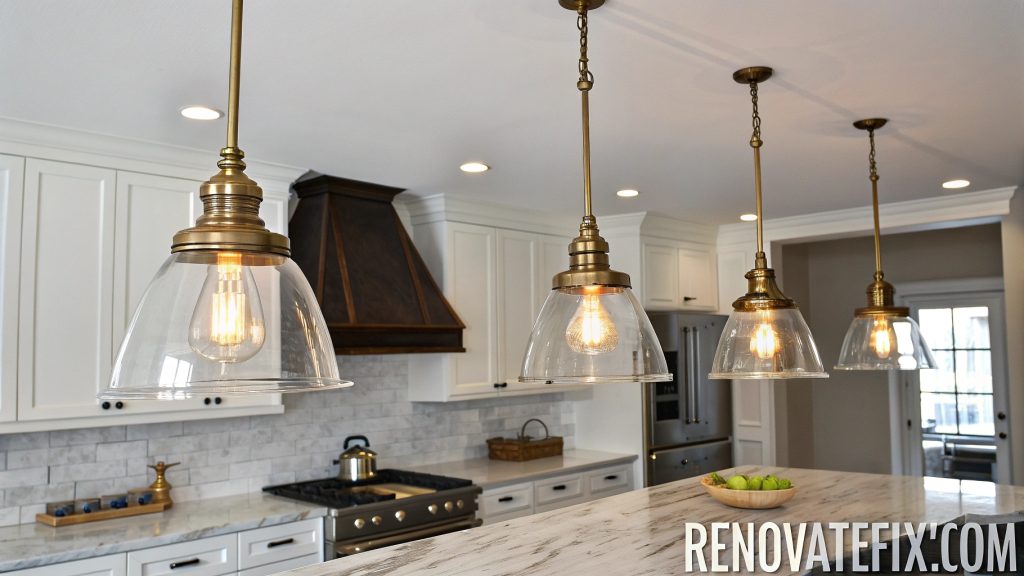
Metal, glass or fabric shades reference historical lighting traditions while housing modern bulb technologies that provide superior brightness and energy efficiency compared to original models.
Adjustable hanging heights allow customization for varying household member statures, ensuring comfortable work conditions regardless of who might be preparing meals on any given evening.
11. Panel-Front Appliances
Custom cabinetry panels concealing refrigerators and dishwashers create seamless visual flow across cooking spaces, eliminating disruptive stainless or black appliance faces.

Disguising modern conveniences behind architectural elements maintains period authenticity in historical homes while reducing visual noise in compact spaces where multiple metallic surfaces might otherwise compete for attention.
Though requiring precise planning during design phases, these integrated solutions provide sophisticated finished appearances that elevate overall impressions beyond standard appliance packages.
12. Natural Stone Flooring
Cool underfoot during summer months while conducting radiant heat beautifully during winters, limestone or marble flooring brings authentic old-world character impossible to replicate through manufactured materials.
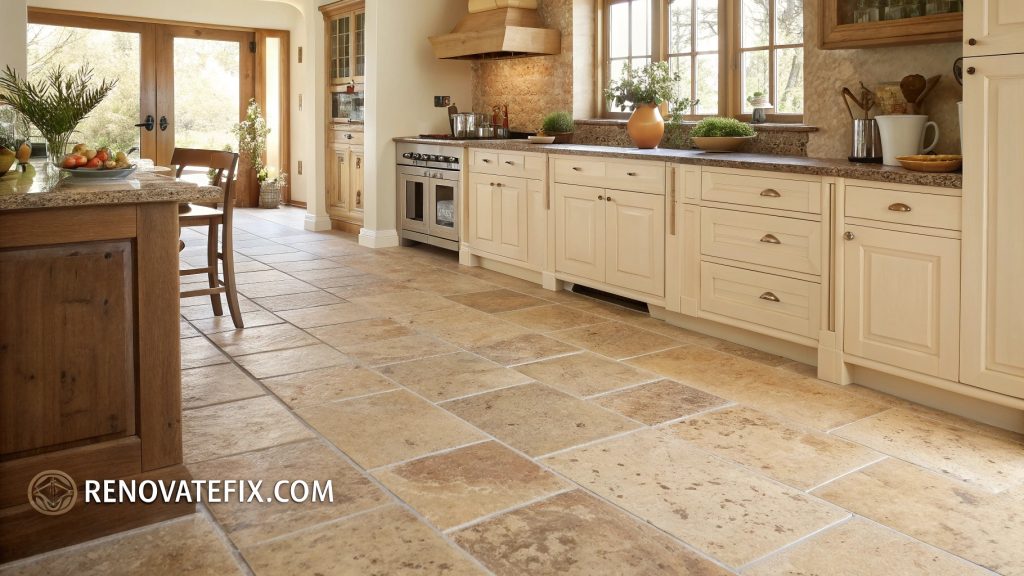
Subtle color variations across individual tiles create visual interest without demanding attention, allowing focus on culinary activities rather than flashy floor patterns.
Developing slight patina through years of foot traffic, quality stone installations improve with age rather than deteriorating—often outlasting several generations of household occupancy.
13. Open Shelving
Carefully curated displays of everyday dishware create personal styling opportunities while keeping frequently used items within easy reach during cooking activities.
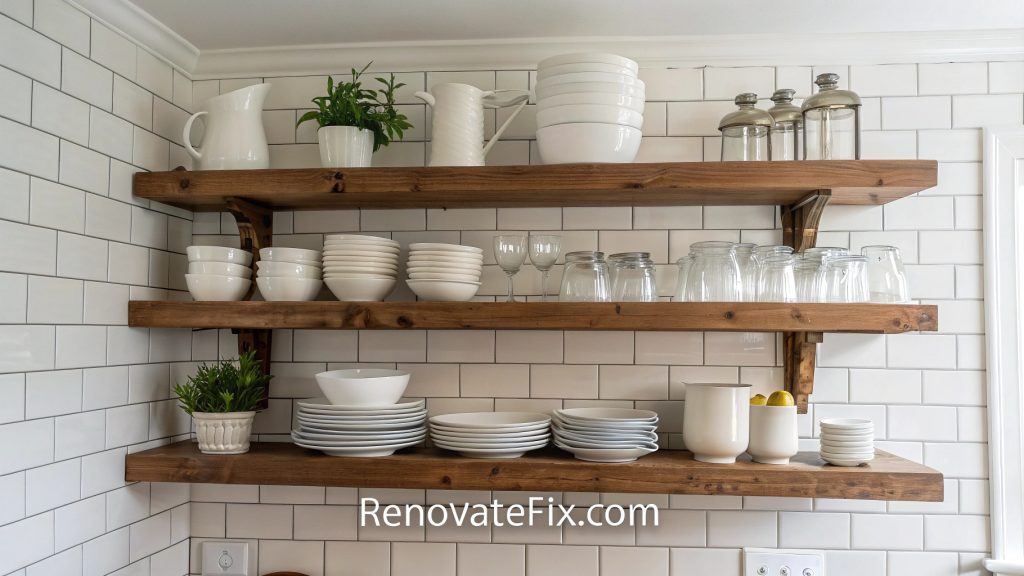
Unlike closed cabinetry hiding contents, visible storage encourages thoughtful acquisition of beautiful basics rather than accumulation of mismatched pieces rarely seen or appreciated.
Though requiring more frequent dusting than standard storage, these architectural elements create breathing space within solid cabinetry runs while allowing wall colors or backsplash materials visibility that might otherwise remain hidden.
14. Furniture-Style Islands
Freestanding wooden workstations resembling antique tables bring architectural interest through leg detailing and apron construction typically reserved for dining spaces.
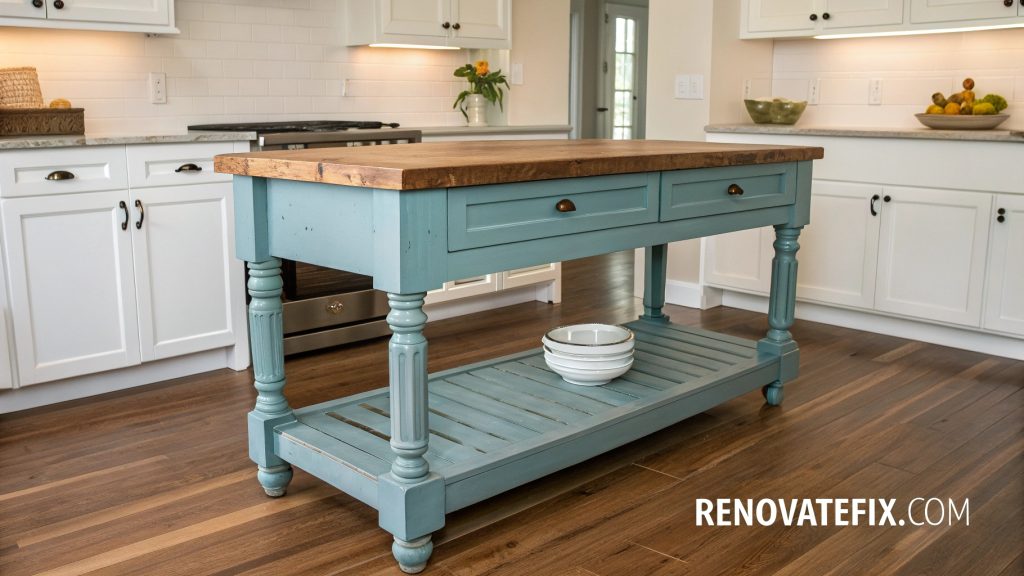
Unlike built-in alternatives permanently fixed to floors, these movable pieces allow flexibility for changing household needs or entertaining requirements through repositioning possibilities.
Often featuring different finishes than surrounding cabinetry, these statement pieces create intentional contrast between perimeter elements and central work zones—referencing historical kitchens predating fitted cabinetry conventions.
15. Plate Racks
Vertical storage solutions displaying cherished dinner plates bring practical accessibility while creating decorative arrangements from everyday essentials rather than requiring separate ornamental purchases.

Originally developed for compact cottages lacking cabinet space, these practical solutions keep frequently used tableware readily available without stacking that might lead to chips or breakage.
Constructed matching surrounding cabinetry materials, these specialized storage areas bring character through their distinctive forms while saving valuable interior shelf real estate for less displayable necessities.
Conclusion
The enduring appeal of a classic timeless kitchen lies not in following momentary trends but in embracing fundamental design principles that have proven their worth across decades.
These fifteen timeless kitchen ideas represent more than mere aesthetic choices—they embody an approach to home design that values quality, functionality, and lasting beauty over passing fads.
By investing in materials that age gracefully, layouts that support genuine cooking activities, and finishes that maintain their appeal through changing seasons of life, you create a kitchen that transcends time.
The most successful classic kitchens balance historical references with practical modern necessities, creating spaces that feel both familiar and fresh regardless of when they were created.
As you consider your own kitchen renovation or design project, remember that truly timeless spaces aren’t frozen in particular periods but rather embody principles of proportion, quality, and authenticity that remain relevant through every era.

